Although I attended film school, (a) it was two decades ago; and (b) I shamefully skipped many of the classes on film history.
As time has passed, I have become increasingly aware of just how poor of a decision it was to eschew the chance to learn more about the early days of film, and to learn from fascinating film scholars.
And so, I have set myself the mission to seek out older films to watch and to teach myself about the early days of film.
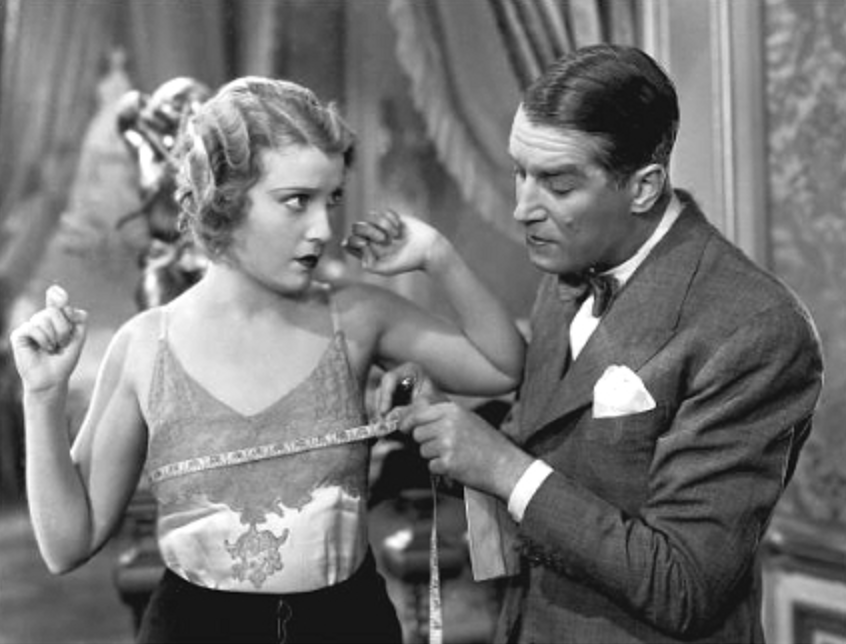
At the Berlin Film Festival a few weeks ago, I had the absolute pleasure of watching a new restoration of Ernst Lubitsch’s black-and-white classic ‘Love Parade’ (1929).
The film is a delight for a number of reasons;
- Maurice Chevalier is wonderful.
- It’s a “talkie” only a few years after they took off.
- It was the first Hollywood movie musical to integrate songs with narrative.
- It was made before the Hayes code (meaning it’s quite salacious and cheeky).
The film made me wonder – when did colour and sound take over from black-and-white and silent movies?
I resolved to turn to the data to answer these two questions. I studied 377,967 feature films, released between 1900 and 2023. I’m going to share my findings on colour today, and then on sound next week.
When did colour take over from black-and-white?
Unusually for this blog, today’s question has a single, clear answer. If we look at all movies lumped together, the answer is 1967. That was the first year in which more colour films were made than black-and-white (just two more, but this was the tipping point).
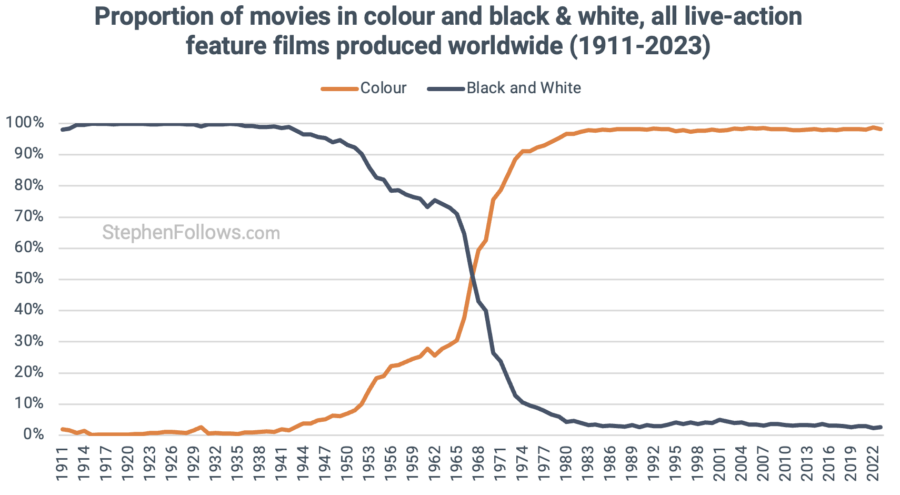
But ending there would feel a little basic, and would do little to add to our knowledge of film history. Let’s dig a little deeper.
The introduction of colour
Early film colourisation began with manual techniques such as hand-tinting frames, exemplified by the work of visionaries like Georges Méliès. The Kinemacolor system then provided the first step towards mechanical colour reproduction, culminating in the first full-fledged feature film with two-colour Technicolor, “The Toll of the Sea” (1922), paving the way for the later three-colour Technicolor process used in “Becky Sharp” (1935).
Key films like “The Wizard of Oz” and “Gone With the Wind,” both released in 1939, acted as milestone markers that showcased the full potential of colour films and helped usher in a new era of visual storytelling.
A great example of beautiful early use of colour is the moment in the Wizard of Oz where Dorthey first lands in Oz and her reality turns from black and white (well, technically sepia) into a rich colourful world. It’s highly worth re-watching that scene if you’ve not seen it recently.
In 1936, barely 1% of films were presented in colour, and it took another 20 years before one in five films made the leap.
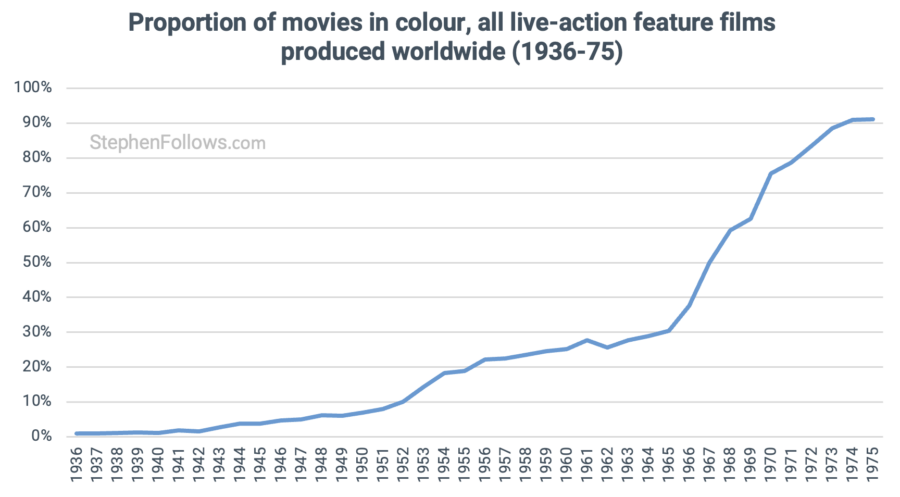
Despite the allure of colour, financial constraints meant that in the 1940s and 50s, black and white remained the economical choice for filmmakers, with colour films requiring nearly three times the budget, a factor that played a part in studios’ cautious approach to adopting this technology.
Although progress was initially slow, things sped up considerably in the mid-60s. In the ten years between 1965 and 1974, colour films went from being 30.5% of releases to 91.0%.
Colour / color around the world
So far we have been grouping all films made into one dataset, but it’s reasonable to assume that different countries adopted the technology at different rates. And that’s indeed what the data reveals.
Of the top production nations, the Soviets beat the Americans to the milestone of producing more colour feature films than black-and-white ones. The data below shows which year each of the nations reached a ‘colour majority’.
- 1951 – Soviet Union
- 1954 – United States
- 1955 – Czechoslovakia
- 1956 – West Germany
- 1959 – Spain
- 1961 – Japan
- 1964 – Italy
- 1966 – Hong Kong, France and the United Kingdom
- 1967 – Argentina and Mexico
- 1968 – Sweden and the Philippines
- 1970 – India
- 1971 – Egypt, Greece, and Turkey
But even these figures hide an interesting quirk. In many countries, it wasn’t a linear story of colour becoming ever more dominant.
For example, colour really took off quickly among American films in the 1950s, first reaching the 50% inflexion milestone in 1954. However, black-and-white made a comeback, meaning that colour was not the preferred option between 1956 and 1962.
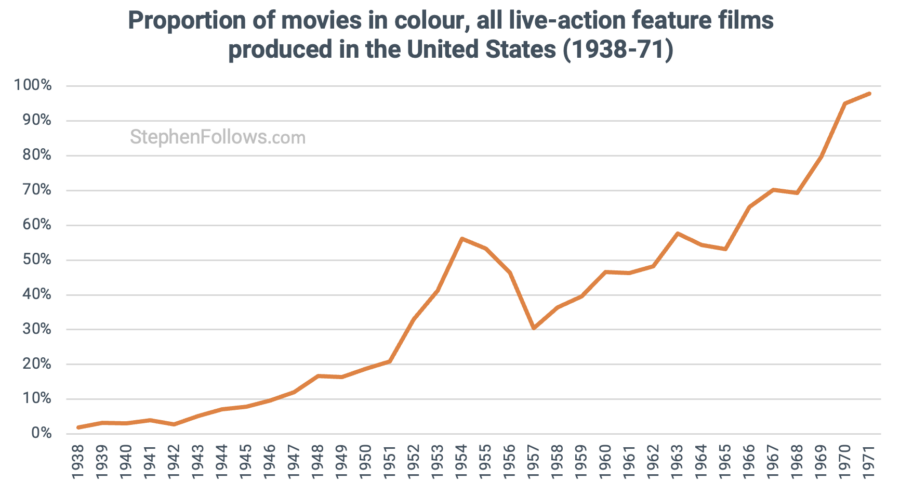
Another similar example is Japan. The Japanese film industry was slower to adopt the new technologies, first reaching the 50% milestone in 1961 – seven years later than the US – and they, too, saw a resurgence of black-and-white filmmaking soon after.
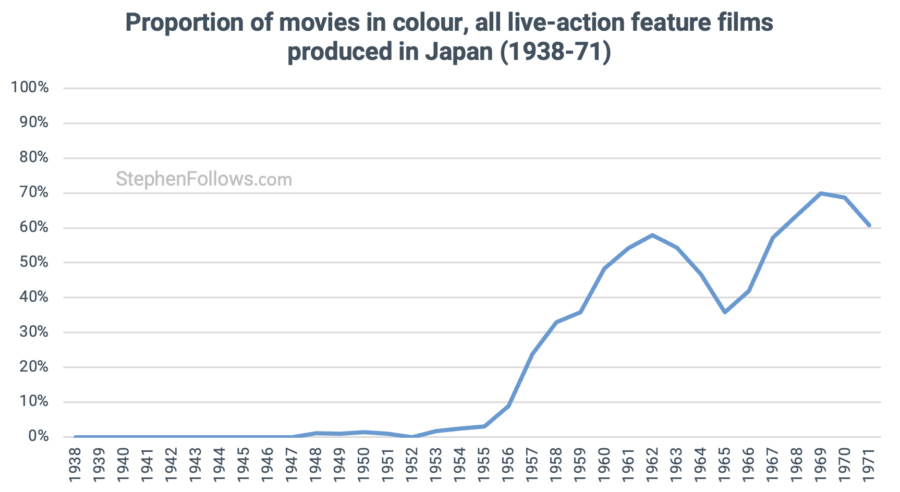
In fact, almost all of the top-producing nations had a bumpy path to complete colour dominance.

Which genres used colour film soonest?
Finally, let’s look at how the genre of the movie was affected when colour became the preferred format. Unsurprisingly, the earliest genre was animation.
However, today’s data study is of live-action movies, so our earliest genre was Biography in 1953. That was followed a year later by Westerns, Adventure films and Historical films (which a large degree of overlap between those genres, of course). This makes sense to me, as a key selling point of the historical epic is to see the past vividly brought to life.
At the other end of the spectrum were Dramas, Romance and War films, all of which crossed the 50% colour threshold in 1968.
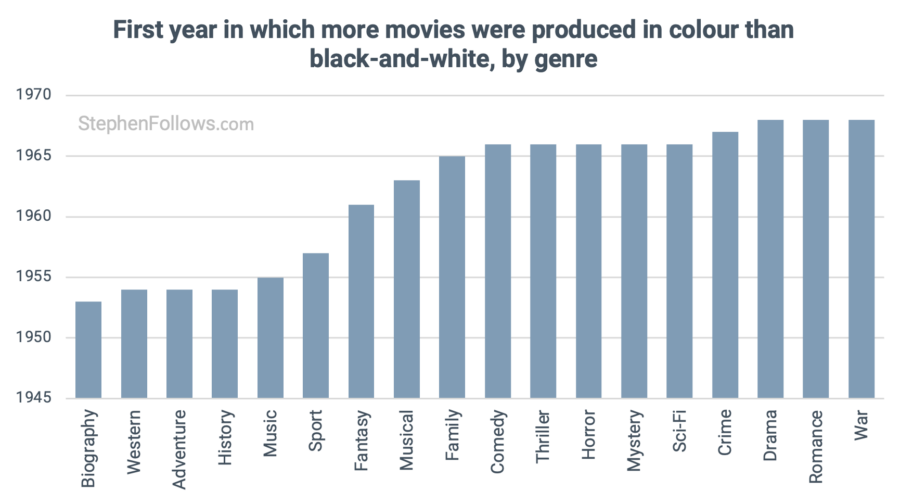
Notes
This looked at live-action feature films, using data from OMDb, IMDb, Wikipedia and my own datasets.
In the early days of film, the notion of what a ‘feature film’ was still in flux, and so some of my data includes films shorter than we would expect today from “A Feature Film”. That said, as I am only looking at the preference of colour or black-and-white, I feel it still reveals something interesting, so I included those shorter titles.





Comments
That was really interesting!
Fascinating as always. Thank you for always asking the questions. If you haven’t already seen it, I highly recommend Mark Cousins’ The Story of Film video series. It is one thing to read all the books and see the stills but not the same as seeing the clips. Although his narration is a bit ‘dry’ I found it well worth watching. I also recommend Cousins’ Women Make Film: A Road Movie Through Cinema to round out the historical perspective. Narrated by Tidla Swinton and other female filmmakers it is a delight.